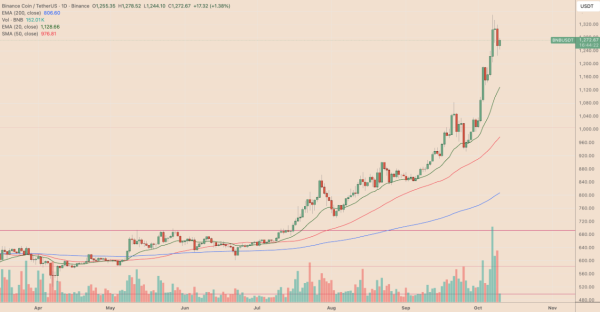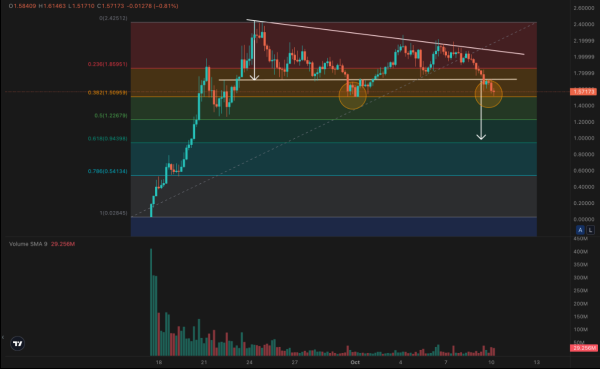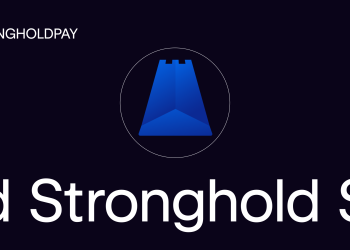Aster (ASTR) has plunged over 35% in the past two weeks, now hovering above a critical $1.50 support level. This drop comes amid a broader BNB Chain selloff, signaling the end of the recent speculative memecoin boom.
Traders and analysts are now assessing whether ASTER could see further downside, with technical and market indicators pointing to a potential 35–40% correction in the near term. This article by Solancie delivers expert insights and a clear explanation of the matter.
The recent crash underscores the vulnerability of high-risk BNB-linked tokens, especially those that thrived during Binance-led promotional campaigns. ASTER, which gained popularity by offering highly leveraged futures and minimal KYC barriers, was a favorite for traders chasing rapid gains in the memecoin sector.
End of BNB Memecoin Season
ASTER’s decline is tightly linked to the apparent end of the BNB memecoin season. The speculative frenzy, which drove multiple small-cap tokens to double or triple in value, was largely fueled by Binance founder Changpeng “CZ” Zhao.
Over the past several months, Binance actively encouraged community-driven token creation through initiatives like Binance Wallet, Binance Alpha, and promotional campaigns offering incentives to memecoin traders.
These programs boosted BNB’s performance, propelling it to new all-time highs and briefly positioning it above Tether (USDT) as the third-largest cryptocurrency. BNB’s YTD gain of 72% exemplified the strength of the memecoin hype.
However, as BNB reached its peak, speculative capital rotated out of high-risk tokens, including ASTER. Traders began locking in profits, while CZ’s recent policy shifts and public statements are being viewed as negative catalysts.
Many analysts attribute the 50–90% crash in BNB-linked tokens to these developments, highlighting the fragility of the memecoin ecosystem when regulatory or corporate guidance changes.
ASTER Technical Analysis: Descending Triangle Breakdown
From a technical perspective, ASTER is now trading in a critical zone. The token recently broke below the $1.72 support, confirming a descending triangle pattern, a classic bearish continuation formation. Descending triangles typically indicate that selling pressure is intensifying, increasing the likelihood of a deeper correction.
Traders using Fibonacci retracement analysis point to $0.94 as the next potential downside target, aligning with the 0.618 Fib level. This suggests that ASTER could experience a 35–40% further decline if bearish momentum persists.
Key support and resistance levels to watch include $1.50, which serves as the immediate floor and had previously provided a temporary bounce in late September.

On the upside, $1.72 is now acting as resistance following the recent triangle breakdown, while $1.85, corresponding to the 0.236 Fibonacci retracement level, could present another potential resistance point during any short-term rebound.
Unless ASTER reclaims the descending triangle’s upper boundary, the broader trend remains bearish, and traders should anticipate further downside pressure.
Market Sentiment and Liquidity Dynamics
ASTER’s price action reflects a broader rotation away from speculative assets on the BNB Chain. As liquidity dries up following the memecoin selloff, smaller tokens face heightened volatility. Traders who previously relied on leveraged positions in ASTER are now reducing exposure, further fueling the downward momentum.
Market observers note that ASTER’s correlation with BNB-linked tokens remains high. As BNB stabilizes or continues to retrace from its all-time highs, ASTER is likely to follow suit. The current bearish sentiment could persist until new institutional or retail demand emerges, potentially around major Fibonacci retracement zones or after broader market stabilization.

Key Levels to Monitor
For traders evaluating ASTER’s short-term outlook, the following levels are crucial: Support: $1.50, $0.94, and Resistance: $1.72, $1.85
A sustained break below $1.50 could accelerate selling and extend the decline toward $0.94. Conversely, a bounce from $1.50 may allow ASTER to attempt a rebound toward $1.72–$1.85.
Technical indicators such as RSI, MACD, and volume trends currently signal bearish momentum. The descending triangle breakdown, combined with the macro memecoin selloff, reinforces the risk of a continued downtrend.
Conclusion: ASTER Price Forecast
In summary, ASTER’s recent 35% plunge, coupled with the end of the BNB memecoin season, suggests that the token may face further losses of 35–40%. The descending triangle breakdown below $1.72 confirms bearish pressure, with $0.94 emerging as a likely short-term target.
While $1.50 could provide temporary support, the broader market sentiment remains risk-averse, and speculative capital continues to exit the BNB Chain ecosystem. Traders should remain cautious, monitor key Fibonacci levels, and consider the potential for continued volatility in high-risk tokens.
ASTER’s fate in October will likely depend on BNB price action, overall crypto market sentiment, and any new liquidity injections or policy signals from Binance. For now, the technical and fundamental outlook points to a challenging period ahead, with another 40% drop a plausible scenario if bearish momentum persists.
The post Aster (ASTR) Analysis: Price May Drop Another 40% as BNB Memecoin Hype Fades appeared first on Visionary Financial.













